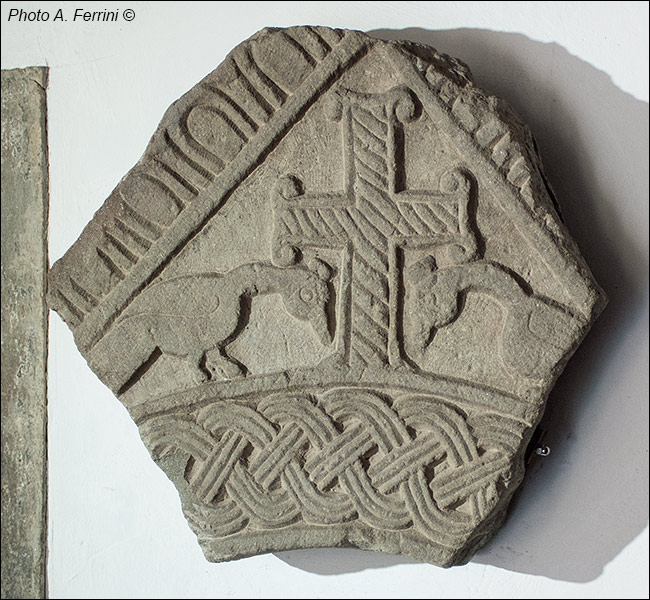Carda
in Casentino, una bella valle Toscana che puoi conoscere in ogni suo dettaglio con questo sito
Italiano
TESTIMONIANZA LONGOBARDA
Appena entrati nella Chiesa di Carda, sulla parete a sinistra è esposta questa pietra che mostra una scolpitura in chiaro stile longobardo, che non significa una pietra di periodo longobardo. Questo vuol dire che potrebbe essere datata IX-X secolo. Vi sono rappresentati i due classici pavoni che si abbeverano sotto una croce, un'immagine che in antichità era il simbolo dell'immortalità e solitamente veniva posta nei cibori, l'elemento architettonico dove vengono custodite le ostie consacrate. Questa pietra qui esposta è quindi un frammento, un pezzo di ciborio, ma di quale chiesa? Certamente non di quella attuale. Fu ritrovata molti anni fa durante la ripavimentazione di un vicolo, dada la simbologia che vi era scolpita fu esposta in chiesa. A Carda non vi era certo stata portata e allora è la chiara testimonianza di una chiesa, in questo luogo, antecedente all'attuale, la cui edificazione aveva risentito della cultura longobarda.
As soon as you enter the Church of Carda, on the left wall this stone is displayed which shows a carving in clear Lombard style, which does not mean it is a stone from the Lombard period. This means that it could be dated 9th-10th century. It depicts the two classic peacocks drinking under a cross, an image that in ancient times was the symbol of immortality and was usually placed in ciboria, the architectural element where the consecrated hosts are kept. This stone displayed here is therefore a fragment, a piece of ciborium, but from which church? Certainly not the current one. It was found many years ago during the repaving of an alley, dada the symbolism that was carved on it was displayed in the church. It certainly had not been brought to Carda and so it is clear evidence of a church, in this place, prior to the current one, whose construction had been influenced by Lombard culture.

















































